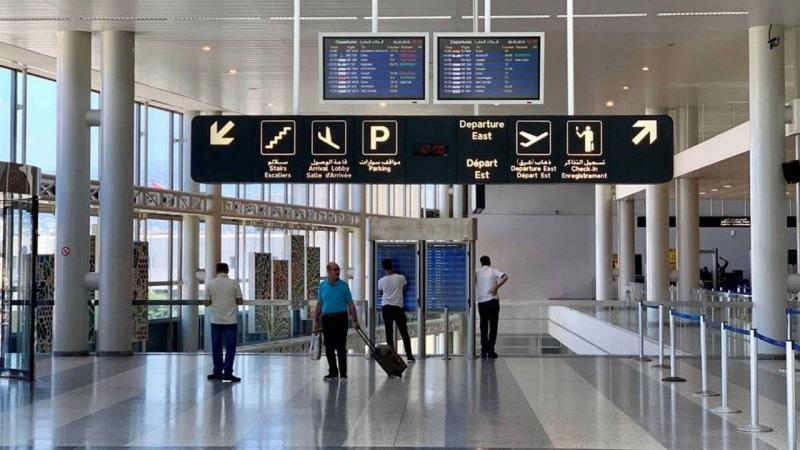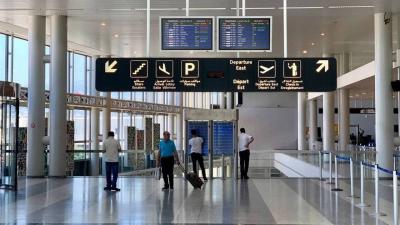The year 2018 sounded the alarm with the study "Labor Force and Living Conditions Survey in Lebanon," which revealed frightening figures about Lebanon's demographic structure and its catastrophic transformations. This study was conducted by the Central Administration of Statistics in cooperation with the International Labour Organization and the European Union. However, no one heeded the warning, and the demographic situation worsened to the point where by 2023 it has become an explosive knot threatening to shatter the Lebanese entity and its population structure. Beyond the economic and financial crisis and deeper than political changes, Lebanon is witnessing a horrifying transformation in its demographic structure that threatens an internal explosion, especially since there is no immediate remedy for it. Neither political settlements among rival parties nor international conferences nor conditions imposed by global financial institutions are capable of addressing the demographic issue in Lebanon, given that the figures now threaten an unknown future. We had hoped that the year 2022 would end on a positive note, but the continued complete neglect of the demographic issue does not bode well for the near future. Poverty, migration, and deprivation are evident. Dr. Ali Fakhour, a researcher in population affairs with a doctorate in geographical sciences and a former dean of the Faculty of Arts and Humanities and the Faculty of Tourism and Hotels at the Lebanese University, explains to "Nidaa al-Watan" the dangers of these transformations.
Since 2019, Dr. Fakhour says, Lebanon has been undergoing unparalleled economic, social, and demographic transformations, culminating by the end of 2022 in a comprehensive economic and financial collapse, accompanied by a failure to approve a recovery plan. Even international reports have not been as harsh on any other country that has faced a crisis as they have been on Lebanon. According to a report from the World Bank, the country has reached an unprecedented crisis in the world in terms of its formation and is classified among the three worst crises globally. The collapse of the executive, judicial, and public administration institutions, along with educational and healthcare institutions, accompanied by a security breakdown and chaos that began to manifest in Beirut, Tripoli, Sidon, Tyre, and the outskirts, are undeniable indicators that Lebanon is heading towards a more difficult situation, especially with the alarming spread of poverty. Dr. Ali Fakhour confirms that the study conducted by ESCWA on the multidimensional poverty rate in Lebanon, which reaches 82%, did not include refugee camps and slum areas, but rather focused on places inhabited by Lebanese people. If these areas were included, the poverty rate in 2022 would exceed 90%, meaning that 3.2 million Lebanese are on the verge of poverty out of a total of 3,860,000 Lebanese, which has prompted UNICEF to classify Lebanon as one of the 20 hunger hotspots in the world, alongside countries in the Horn of Africa, Afghanistan, Somalia, and Nigeria.
These frightening poverty figures pave the way for the more complex and profound issue in Lebanon, which is the demographic change affecting its population structure. Starting from 2019, Lebanon has witnessed a new wave of migration that decreased a bit in 2020 due to the pandemic but saw a noticeable rise the following year, with the number of migrants in 2022 reaching 150,000. When we sum up the three previous years, it becomes clear that 10% of the Lebanese population has migrated, reducing the number of those remaining in Lebanon to 3,500,000, while the number of non-Lebanese individuals continues to rise, as well as the number of residents in Lebanon living illegally, in addition to those without proper documentation or citizenship.
An alarming trend is the aging of the Christian population. Statistics show a decline in Lebanon’s population growth, and the increase in Lebanon's population is solely due to the naturalization decree that occurred in 1994, where the number of naturalized individuals doubled from 210,000 to about 450,000. This is confirmed by population maps showing that the increase is concentrated in the areas of Akkar, Al-Dinnieh, and Tripoli, where the majority of naturalized individuals reside.
In contrast to this growth, it is clear that other areas of Lebanon are not experiencing any population increase, particularly Beirut and parts of Mount Lebanon. It can be stated bluntly that Christian areas such as Metn, Jbeil, and Kesrouan have entered what studies describe as a phase of aging, becoming predominantly retirement resorts, especially in mountainous regions. The number of children per household has fallen below the required replacement level, known as the Fertility Replacement Level. While the rate should be 4.1 for sustainability and growth, figures in some regions such as Jezzine reach 3.3, in Rashaya, Kesrouan, and Beirut 3.4, according to a study conducted by the Central Administration of Statistics between 2018 and 2019, comparable to some European countries. In contrast, the rate in Akkar is 4.8 and in Sidon 4, and in Baalbek 4.2. These varying figures give a true picture of the situation in Lebanon and signal some regions' shift towards aging, while the moderate population increase is almost confined to Muslims in Akkar, northern Lebanon, and certain regions in the Bekaa and the South, which is a slight increase insufficient to counterbalance the youth migration waves affecting all sects, or more accurately, the economic displacement of youth.
According to international classifications, 34 countries out of 234 are experiencing a population decrease, with Lebanon ranking high in terms of population decline, reaching 0.88%.
**Catastrophic Projections: Lebanese Population Decline**
All previous data regarding migration and lack of population growth points to one reality: the decline in the number of Lebanese citizens. With the worsening living crisis in 2022, Lebanon's demographic situation is likely to undergo further changes, particularly within families, as the number of births declines. The average number of Lebanese family members has dropped from 4.6 to around 3.6, resulting from a general decline in fertility. The number of young people has declined by 20.5% in 2018. This disheartening reality is currently increasing, with youth hesitating to marry due to significant financial difficulties, coupled with an increase in the divorce rate, which has reached one in five marriages as a result of the living crisis's impact on couples and families.
The decline in births is accompanied by an increase in the elderly population, which has reached 80%, representing about 531,000 of Lebanon’s population, with an average of 62.5%, whereas, half a century ago, they only comprised 12% of the population. The percentage of the elderly in Beirut Governorate has reached 90% and 116% in the Mount Lebanon Governorate!
If we summarize all those numbers, we can record the following: Amid the decrease in the number of Lebanese citizens and the aging of Lebanon’s population in comparison with the increasing numbers of non-Lebanese, especially among youth and children, and the rising birth rates among refugees, we stand before a ticking demographic time bomb that threatens to explode at any moment, especially with periodic talks about the resettlement of refugees. The United Nations estimates the current number of residents in Lebanon at 6,850,000 individuals, while Dr. Fakhour asserts that the number reaches eight million, resulting in the highest refugee count globally relative to its land area and population. The UN Refugee Agency has focused on registered refugee numbers, though predicting the number of unregistered individuals is impossible. A data expert working with an NGO that assists refugees remarked: "We were shocked when a number appeared on the screen, indicating two million registered refugees and placed a large question mark underneath to signify the ambiguous question regarding the unregistered individuals living in most regions and villages of Lebanon."
Added to these figures are all residents without legal documentation, including foreign workers, children without identities, those without registration, and many others who inhabit Lebanon illegally. As a result, we can draw one terrifying fact: half of the residents on Lebanese soil are non-Lebanese, with only 45 to 50% being Lebanese, transforming Lebanon into a large camp and causing a significant rift in its demographic structure. Dr. Ali Fakhour questions in a study he conducted in 2022: "Can you imagine what will happen in ten years?" Lebanon has been turned into a massive human reservoir containing millions of refugees, displaced persons, unregistered individuals, and illegal immigrants from various nationalities.
The situation has become catastrophic in Lebanon more than ten years into the Syrian crisis, while all estimates suggest that the reconstruction of Syria also requires a long time frame of at least ten years, with the UN stating that rebuilding Syria may take half a century. Here arises the fundamental question: What will happen to Lebanon if the presence of refugees continues, youth migration persists, and the population continues to decline? What will occur when population crises explode? Undoubtedly, this will lead to engulfing Lebanon in chaos, along with highly complex economic and security repercussions that will also impact Europe and the world.
Will these figures shake the consciences of those responsible in Lebanon to realize the size of the disaster? Or will their preoccupation with power-sharing blind them to the reality that they will not be able to pass on their gains to a new generation after contributing to the discontinuation of the Lebanese lineage?




